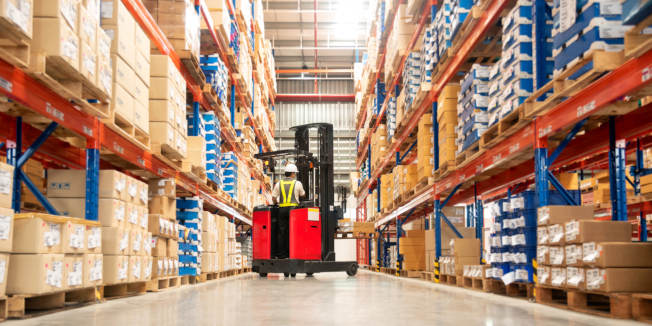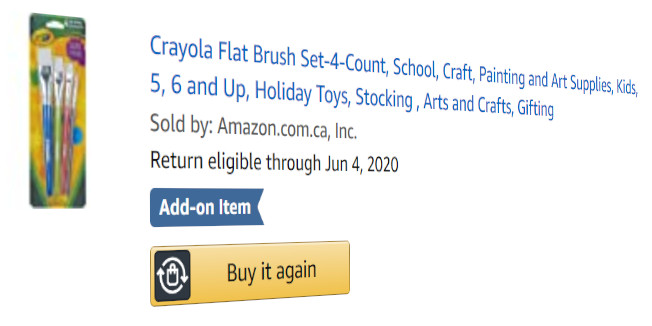Google’s decision to include organic listings in its expanded Shopping platform has prompted a ton of healthy debate across the industry—including our own interpretation for what it means for advertisers.
Never ones to shy away from debate, DAC’s Kyle Harris (Director of Local Optimisation) and Brian Coccaro (AVP of Paid Search) sparred with one another over Google’s underlying motivations and possible long-term repercussions. This is their conversation.
Kyle Harris: Hey! Just read your blog post on Google expanding its shopping platform to include organic listings. What I find interesting is that the only thing Google has on Amazon, from a product search standpoint, is the ability to serve a consumer who is looking for a product online and wants to pick it up in store immediately. Amazon does ecommerce, and they do it better than anybody. But, unlike Amazon, Google can let customers choose ecommerce or in-store pickup. Amazon has to ship items to consumers; Google can show you how to get that product you want now.
Brian Coccaro: Google has scale, too. And their business is not selling you products, it’s getting the search. So as long as Google gets the search, I’m sure they’d be happy to send traffic to Amazon. This isn’t a fight to sell physical products. It’s a fight for ad dollars. Expanding Google Shopping to serve organic listings doesn’t change Google’s motivation. The searches are still monetized with ads, just like the normal search page. The advantage to Google is that it is an aggregator of the entire internet.
A lot has been made about the “small e-retailers” getting their products in front of shoppers, but Walmart, Amazon, Target, and the like are going to have massive, structured feeds that the small e-retailers will be unlikely to match. And those massive, structured feed results are going to be all over Google shopping because of their scale, history, and more.

At our Account Summit in January, I predicted that in the future there will be no need for consumer-facing websites. This is a perfect example of how they are becoming superfluous. Google pulls everyone’s data, shows it in an individualised, prioritised, and simple view, and all that needs to happen after that is a checkout process. Amazon sort of did the same thing by aggregating all the products and data about them but, unlike Amazon, Google doesn’t need to get into the messy business of owning the product, shipping the product, and so on. They just take the high-margin ad click and call it a day. Organic traffic sent to retailer sites is the cost of doing business for Google, same as it ever was.
Kyle: It seems that half of what Google is working on now is how to keep people on Google and not somewhere else. They hate sending traffic off Google. It’s why they built Google My Business (where a user can get all the info they need, and never go to the brand’s website), Google Hotels (to keep users on Google and not drive them to Kayak or Hotels.com), and Google Food (to keep users on Google and not drive traffic to Uber Eats or GrubHub). Google will drive traffic to Amazon, but I assume they like doing that less than keeping users on Google. Featured snippets are another example where content is already displayed on Google so consumers don’t need to click away to get an answer.
Brian: Those are all ways to mitigate the risk of bad website interaction. When users click on a Google ad and are taken to a place where they can’t convert, that’s a black eye for ad experience. And user experience is a large part of Google’s Quality Score and organic algorithm.
![]()
Jacob’s Law of UX is applicable here. Users spend most of their collective time on other websites and not yours, so one’s website should reflect the rest of the internet. Doing so ensures users can navigate and use a website with as little friction as possible. It’s why the number of websites with flashy intro pages, heavy auto-play animations, and ornate navigation options have dwindled over the years and the popularity of Material Design has increased.
Kyle: Google seems to be working to become the marketplace and take a piece of revenue from the transaction. So, if they have ecommerce with delivery like Amazon does—and Local Inventory Ads to facilitate buy online pickup in store—they’ll have a unique leg up on Amazon or anybody else for that matter.
Brian: But housing, selling, and fulfilling a product is hard and requires a ton of infrastructure. Amazon sinks so much money into logistics. Google can stay out of all that with this approach.
Kyle: Yup. All signs point to Google not wanting to get into logistics (at least not yet), but that they want to be the marketplace so badly they’ve given away an entire tab of Shopping. Google also needs to know your buying behaviour. If they know which products you’ve purchased, their targeting improves. A click that leaves Google and drives to Amazon means Google doesn’t fully see what happened with the sale, which prevents the end-to-end visibility that would otherwise feed their targeting and algorithms.
Brian: Google can make really accurate projections on non-trackable purchases. Google’s user profiles for logged-in users are decades old with more browsing and product history than the user knows about themselves. So, a click on a product that goes to a walled garden like Amazon can be weighted in a way that is less certain than a purchase made on a Google Analytic-tagged site, but it isn’t a vacuum of information.

Even when a user purchases something, there are cancellations, returns, etc. Google doesn’t know what you physically have in your house. It’s all projections. And to your point, for users who pick up in store, there is even more uncertainty, But I know what you mean about the content on Google, the clicks that stay on Google or never even happen (zero-click searches). You’re right that there does seem to be a clear motive.
Kyle: Right, Google is super aware that they’ve fallen behind on product search in comparison to Amazon and their c-level suite is smart enough to see that the biggest leg up they have is local/in-store. It’s why Google My Business gets so much focus even though it’s a non-revenue generating side of their business. Google literally owns the best map in the world and when they layer that map onto things like hotels, food delivery, or local product inventory, they become monopolistic. The interesting point will be seeing if local businesses can provide the inventory data to Google in a way that fulfills this goal. Google’s purchase of Pointy is a great indicator that it needs local product inventory, but can businesses manage this? That will be the tipping point in Google versus Amazon as we move forward.
Brian: I don’t think local businesses are going to keep up at all. The infrastructure to keep feeds clean, up-to-date, and accurate will be too heavy for SMBs. It already is a difficult task, and the better the giants of retail get at it, the more their listings will be clicked, converted, and distributed. If this is really about going after Amazon, maybe Google never needs to get into logistics. It just needs all of the retailers that lose sleep over Amazon to do Google’s bidding. That was an ad pun, by the way…
Capitalise on a titanic struggle
Google versus Amazon may be the defining clash of an era, but the animosity between these two giants also opens up a world of opportunity for the rest of us—especially for ecommerce brands. From paid search to local listings to checkout UX, we’ll help you drive growth even in the most uncertain times.




